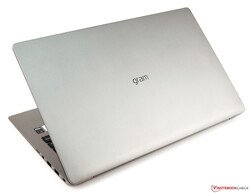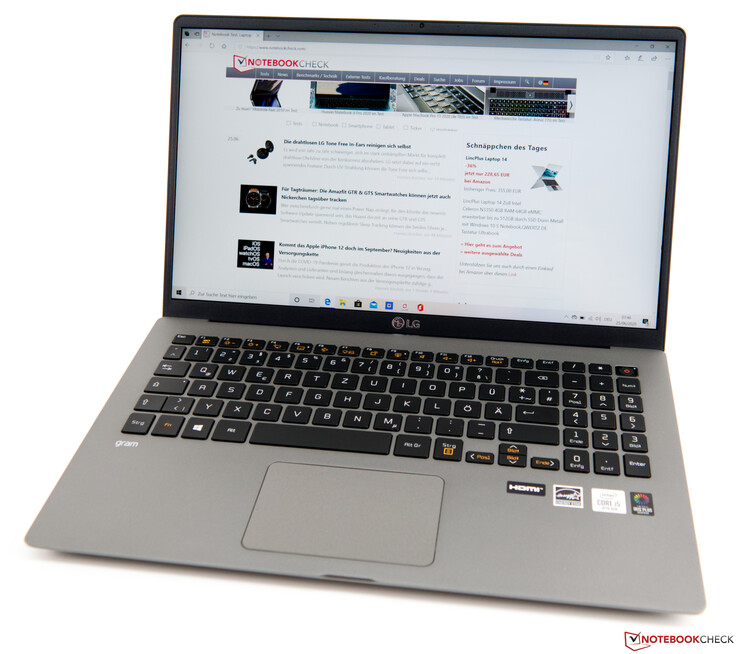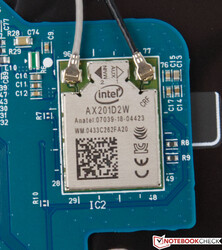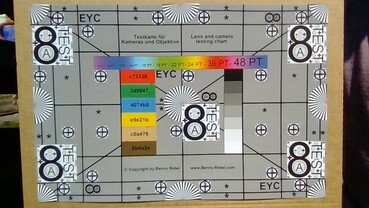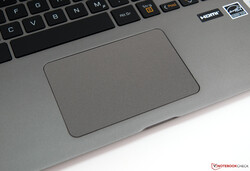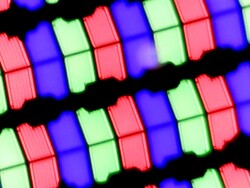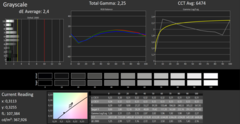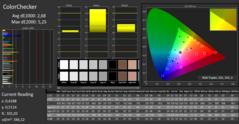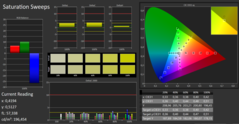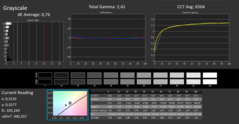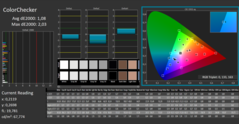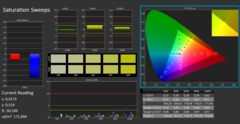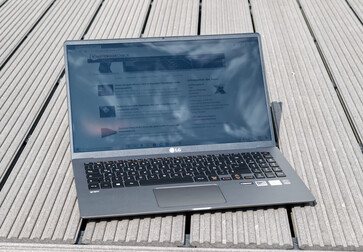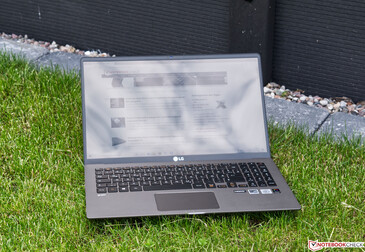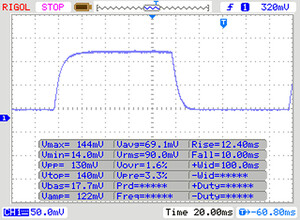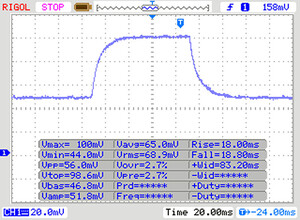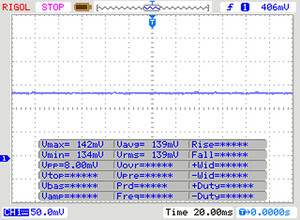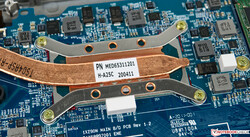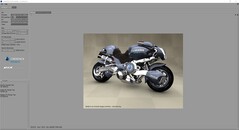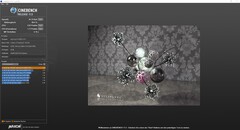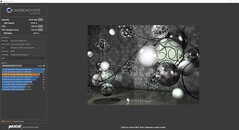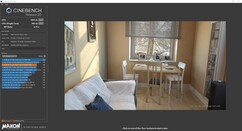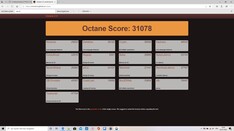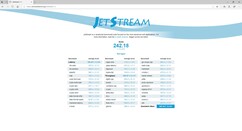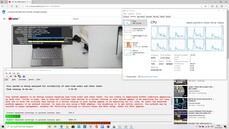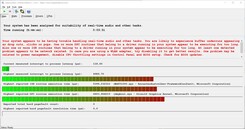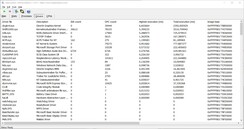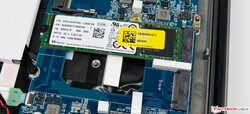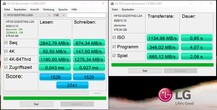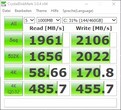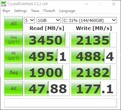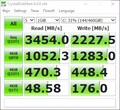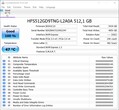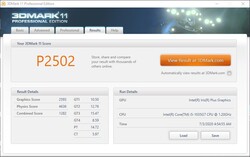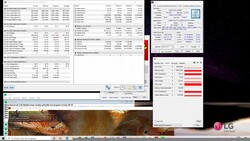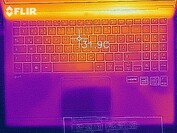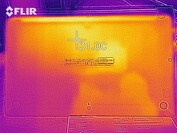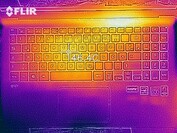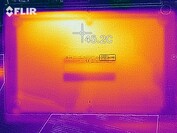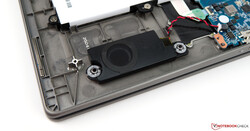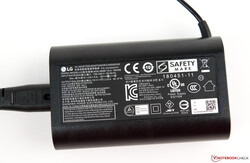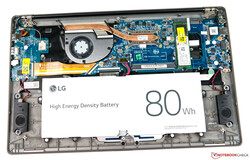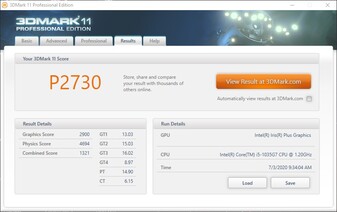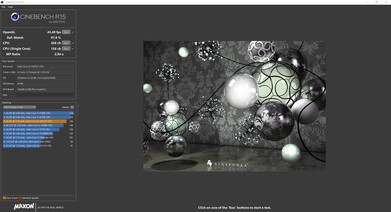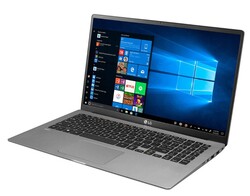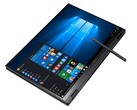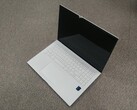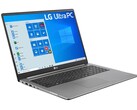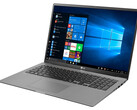The LG Gram 15 Laptop Review: Featherlight 15-inch laptop with a great display

Right off the bat, we have some good news: The LG Gram 15Z90N is currently available in various online stores in Germany. Getting the predecessor model in Germany was not as easy.
Just like its predecessor, the LG Gram 15 weighs slightly over a kilogram (~2.2 lb). A new SoC ensures a boost in performance, and thanks to a very large battery the device can last for a long time. The price tag of 1399 Euros ($1580) is not likely to scare off price-conscious buyers. For this money buyers will get an Intel Core i5-1035G7, 8 GB of RAM and a 512 GB SSD. In our review, the LG Gram 15Z90N will do battle against its direct predecessor. However, MSI, Schenker and Microsoft also have similar devices on offer, which we have included in the current review.
Rating | Date | Model | Weight | Height | Size | Resolution | Price |
|---|---|---|---|---|---|---|---|
| 84.8 % v7 (old) | 07 / 2020 | LG Gram 15Z90N i5-1035G7, Iris Plus Graphics G7 (Ice Lake 64 EU) | 1.1 kg | 16.8 mm | 15.60" | 1920x1080 | |
| 86.4 % v6 (old) | 08 / 2018 | LG Gram 15Z980-B.AA78B i5-8550U, UHD Graphics 620 | 1.1 kg | 17 mm | 15.60" | 1920x1080 | |
| 80.1 % v7 (old) | 02 / 2020 | MSI Modern 15 A10RB i7-10510U, GeForce MX250 | 1.6 kg | 15.9 mm | 15.60" | 1920x1080 | |
| 83.8 % v6 (old) | 04 / 2019 | Schenker Work 15 i7-8750H, UHD Graphics 630 | 2.2 kg | 24.9 mm | 15.60" | 1920x1080 | |
| 82.9 % v7 (old) | 10 / 2019 | Microsoft Surface Laptop 3 15 Ryzen 5 3580U R5 3580U, Vega 9 | 1.5 kg | 14.7 mm | 15.00" | 2496x1664 | |
| 82.6 % v6 (old) | 03 / 2019 | Schenker Slim 15-RE-E19 i5-8265U, UHD Graphics 620 | 1.5 kg | 19.9 mm | 15.60" | 2x1 |
Case
In order to build a lightweight device, LG has turned to magnesium. This material is very light and hard to break. However, it does not feel very premium to the touch since it feels a lot like plastic. The chassis is quite rigid, though, but the display lid is easy to bend. When applying a lot of pressure to a certain area of the chassis, you can witness some give in that area. Applying pressure to the display lid with a finger does not cause any rippling on the screen.
The LG Gram 15 comes in the colour scheme known as Gray
. Unlike many other laptops, the matte surfaces of the LG Gram 15 are not susceptible to fingerprints. Despite a very low weight, the display lid can be lifted with one hand. However, the hinges cannot prevent the screen from wobbling.
All in all, the LG Gram 15 looks very modern, because of its small bezels. The overall build quality leaves nothing to be desired.
The LG Gram 15Z90N occupies a relatively small area of 35.8 x 22.8 centimetres (~14.1 x 8.98 in), which means that it is as big as its predecessor and slightly smaller than the Surface Laptop 3 from Microsoft. Weighing in at 1.1 kilograms (2.43 lbs), the 15-inch LG Gram 15 is very light and, together with its 237-gram (0.52 lbs) power adapter, is considerably lighter than the competition.
Connectivity - LG Gram offers plenty of ports
The LG Gram 15 offers a great selection of ports. In addition to three USB 3.0 Type-A ports, there is also a USB Type-C port, which supports Thunderbolt 3. Moreover, the device can be charged through the USB-C port, which can come in handy if you forget the included charger at home. External displays can be connected via the full-size HDMI port on the left side of the device or, with the help of an adapter, via the Type-C port. The 2020 model comes with an SD card reader. When it comes to ports, the LG Gram 15Z90N gives the competition a run for their money.
SD Card Reader
The microSD card reader is located on the right side of the device and operates at USB 3.0 speeds. The slot swallows SD cards almost completely, which is why cards do not protrude from the slot. In the benchmark with our reference-grade SD card (Toshiba Exceria Pro M501 microSDXC 64GB), the LG Gram 15 achieved such great results that it took first place in our comparison chart. Only the MSI Modern 15, which has a much slower card reader (only USB 2.0 speeds) fell far behind the LG Gram 15.
| SD Card Reader | |
| average JPG Copy Test (av. of 3 runs) | |
| LG Gram 15Z90N (Toshiba Exceria Pro M501 microSDXC 64GB) | |
| Schenker Work 15 (Toshiba Exceria Pro SDXC 64 GB UHS-II) | |
| LG Gram 15Z980-B.AA78B (Toshiba Exceria Pro M501 64BG) | |
| Schenker Slim 15-RE-E19 (Toshiba Exceria Pro SDXC 64 GB UHS-II) | |
| Average of class Subnotebook (18.4 - 142, n=14, last 2 years) | |
| MSI Modern 15 A10RB (Toshiba Exceria Pro M501 UHS-II) | |
| maximum AS SSD Seq Read Test (1GB) | |
| LG Gram 15Z90N (Toshiba Exceria Pro M501 microSDXC 64GB) | |
| LG Gram 15Z980-B.AA78B (Toshiba Exceria Pro M501 64BG) | |
| Schenker Work 15 (Toshiba Exceria Pro SDXC 64 GB UHS-II) | |
| Schenker Slim 15-RE-E19 (Toshiba Exceria Pro SDXC 64 GB UHS-II) | |
| Average of class Subnotebook (22.5 - 207, n=14, last 2 years) | |
| MSI Modern 15 A10RB (Toshiba Exceria Pro M501 UHS-II) | |
Communication
The new Wi-Fi 6 module in the new LG Gram 15 delivers better results than ever. Nevertheless, the Wi-Fi performance of the Gram 15 is slightly worse than that of the competition. However, the differences in performance should be imperceptible in everyday use. Those who need a faster internet connection can use the included Ethernet adapter to connect to a faster wired network. Unfortunately, there is no optional LTE version.
Web Camera
The integrated web camera (0.9 MP) has a maximum resolution of 1280x720. It produces blurry and washed-out videos and images. Moreover, under low-light conditions, there is a lot of noise. The colour deviation of 20.85 is way too high. A Delta-E less than 3 is far, far away.
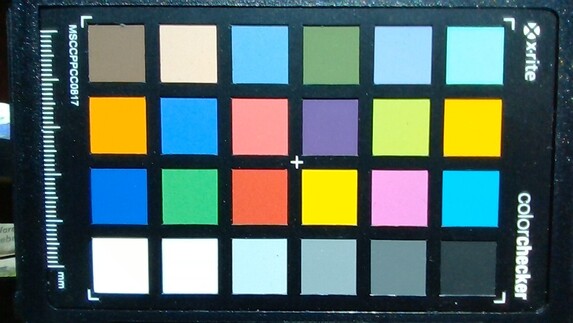
Security
The Kensington Security Slot is a very sensible inclusion for any ultraportable laptop, because it can prevent the device from getting stolen. The LG Gram 15 also features a fingerprint sensor. It is integrated in the power button and, after the initial set-up, makes logging in considerably easier.
Accessories
In addition to the obligatory safety warnings and the warranty brochure, the box of the LG Gram 15 contains an Ethernet adapter.
Maintenance
Those who think themselves capable can open the LG device up to do basic maintenance and upgrade components. All in all, there are eight screws, which are hidden behind various coverings and rubber feet. Once the base cover is removed, users will get easy access to the fan and the heatsink. The soldered-in 8 GB of RAM can only be expanded with an additional module.
Warranty
The LG Gram 15 comes with a 24-month warranty.
Input Devices
Keyboard
Because the LG Gram 15 is now freely available in Germany and Austria, users will no longer have to make do with the QWERTY layout. The keys sit firmly in their cutouts and provide good tactile feedback during typing. The short travel distance of the keys is counterbalanced by a high amount of force required to reach the actuation point, which is why the keys do not feel mushy. The keys are well-sized. That being said, the keys on the numeric pad are somewhat smaller due to design considerations. Idiosyncrasies, which were inherited from the predecessor, take a while to get used to. Until that, miss-strokes are hard to avoid. To give an example: the right shift key is placed really close to the arrow keys. The white keyboard backlight, which offers two brightness levels, is worthy of praise.
Touchpad
The Touchpad, which is located below the keyboard, measures 10.3 x 6.9 centimetres (~4.05 x 2.7 in) and makes good use of the available space. During our review, it worked very well. It allows users to move the cursor easily and with precision. We did not find any dead areas in the course of our review. At the bottom of the Touchpad, there are two clickable buttons.
Display
The LG Gram 15Z90N offers a conventional Full HD display, which is produced by LG itself. The 15.6-inch screen has a pixel density of 141 PPI. The resolution of 1920x1080 is sufficient for a laptop screen of this size. In our testing, the display brightness peaked at 366 cd/m², which is a rather good result. Here, the only competing device that has a brighter screen is the Surface Laptop 3. We have a few not so nice words about the display brightness when running on battery power. When the Gram 15 is not plugged in, the screen brightness drops to 316 cd/m². Thanks to a low black value (0.28 cd/m²), the display offers a good maximum contrast ratio of 1307:1. When compared to the competition, the LG Gram 15 does quite well. However, it is beaten by the Surface Laptop 3 in certain areas. Having said that, the Surface Laptop 3 is beaten by the rest of the competition when it comes to response times.
We do not wish to omit the fact that the LG Gram 15’s screen suffers from clouding. However, it is mild and only noticeable in dark scenes. The display does not exhibit PWM flickering.
| |||||||||||||||||||||||||
Brightness Distribution: 88 %
Center on Battery: 316 cd/m²
Contrast: 1307:1 (Black: 0.28 cd/m²)
ΔE ColorChecker Calman: 2.68 | ∀{0.5-29.43 Ø4.78}
calibrated: 1.08
ΔE Greyscale Calman: 2.4 | ∀{0.09-98 Ø5}
96% sRGB (Argyll 1.6.3 3D)
61% AdobeRGB 1998 (Argyll 1.6.3 3D)
66.8% AdobeRGB 1998 (Argyll 3D)
96.4% sRGB (Argyll 3D)
66% Display P3 (Argyll 3D)
Gamma: 2.25
CCT: 6474 K
| LG Gram 15Z90N LP156WF9-SPN1, .2 IPS LED, 1920x1080, 15.6" | LG Gram 15Z980-B.AA78B LP156WF9-SPN1, IPS LED, 1920x1080, 15.6" | MSI Modern 15 A10RB Chi Mei N156HCE-EN1, IPS, 1920x1080, 15.6" | Schenker Work 15 LP156WFC-SPP1, IPS, 1920x1080, 15.6" | Microsoft Surface Laptop 3 15 Ryzen 5 3580U Sharp LQ150P1JX51, IPS, 2496x1664, 15" | Schenker Slim 15-RE-E19 Chi Mei CMN15E8, IPS, 2x1, 15.6" | |
|---|---|---|---|---|---|---|
| Display | -1% | -1% | -41% | -0% | -5% | |
| Display P3 Coverage (%) | 66 | 65.3 -1% | 66 0% | 38.12 -42% | 66.9 1% | 63.7 -3% |
| sRGB Coverage (%) | 96.4 | 96.2 0% | 92.1 -4% | 57.4 -40% | 99.3 3% | 87.7 -9% |
| AdobeRGB 1998 Coverage (%) | 66.8 | 66.3 -1% | 66.5 0% | 39.39 -41% | 63.7 -5% | 63.9 -4% |
| Response Times | -2% | -38% | -14% | -49% | -6% | |
| Response Time Grey 50% / Grey 80% * (ms) | 36 ? | 34.3 ? 5% | 43.2 ? -20% | 37.2 ? -3% | 47.2 ? -31% | 37 ? -3% |
| Response Time Black / White * (ms) | 22 ? | 23.7 ? -8% | 34.4 ? -56% | 27.2 ? -24% | 36.8 ? -67% | 24 ? -9% |
| PWM Frequency (Hz) | 26040 ? | 21370 ? | 25000 ? | |||
| Screen | -15% | -20% | -72% | 0% | -26% | |
| Brightness middle (cd/m²) | 366 | 349 -5% | 289.4 -21% | 238 -35% | 416.9 14% | 289 -21% |
| Brightness (cd/m²) | 342 | 331 -3% | 273 -20% | 235 -31% | 389 14% | 280 -18% |
| Brightness Distribution (%) | 88 | 84 -5% | 82 -7% | 87 -1% | 86 -2% | 87 -1% |
| Black Level * (cd/m²) | 0.28 | 0.32 -14% | 0.27 4% | 0.14 50% | 0.4 -43% | 0.36 -29% |
| Contrast (:1) | 1307 | 1091 -17% | 1072 -18% | 1700 30% | 1042 -20% | 803 -39% |
| Colorchecker dE 2000 * | 2.68 | 3.1 -16% | 2.32 13% | 6.1 -128% | 2.75 -3% | 3.93 -47% |
| Colorchecker dE 2000 max. * | 5.25 | 6.6 -26% | 5.76 -10% | 14.2 -170% | 6.64 -26% | 6.98 -33% |
| Colorchecker dE 2000 calibrated * | 1.08 | 1.5 -39% | 2.49 -131% | 4.4 -307% | 0.71 34% | |
| Greyscale dE 2000 * | 2.4 | 3.3 -38% | 3 -25% | 5.2 -117% | 1.8 25% | 3.73 -55% |
| Gamma | 2.25 98% | 2.16 102% | 2.22 99% | 2.45 90% | 2.09 105% | 2.42 91% |
| CCT | 6474 100% | 6973 93% | 6867 95% | 7469 87% | 6646 98% | 6802 96% |
| Color Space (Percent of AdobeRGB 1998) (%) | 61 | 61.46 1% | 59.8 -2% | 36.3 -40% | 63.4 4% | 57 -7% |
| Color Space (Percent of sRGB) (%) | 96 | 96.05 0% | 92 -4% | 57.2 -40% | 99.4 4% | 87 -9% |
| Total Average (Program / Settings) | -6% /
-10% | -20% /
-19% | -42% /
-59% | -16% /
-6% | -12% /
-19% |
* ... smaller is better
When compared to the predecessor model, the Delta E deviation (2.68) from the sRGB colour space is somewhat smaller and is less than the desired value of 3. After calibration, which we carried out despite a good original Delta E value, the colour accuracy increased even further. Just like its predecessors, 2020’s model offers users an ability to change the colour temperature via LG Control Center
. The noticeable bluish cast persisted even after calibration. The LG Gram 15Z90N does well when it comes to colour space coverage, because it can cover 96% of the sRGB colour space. The colour space coverage is somewhat worse when it comes to the Adobe RGB colour space (61%). Nevertheless, the Gram 15 can still be used for occasional photo and video editing.
Display Response Times
| ↔ Response Time Black to White | ||
|---|---|---|
| 22 ms ... rise ↗ and fall ↘ combined | ↗ 12 ms rise | |
| ↘ 10 ms fall | ||
| The screen shows good response rates in our tests, but may be too slow for competitive gamers. In comparison, all tested devices range from 0.1 (minimum) to 240 (maximum) ms. » 47 % of all devices are better. This means that the measured response time is similar to the average of all tested devices (20.2 ms). | ||
| ↔ Response Time 50% Grey to 80% Grey | ||
| 36 ms ... rise ↗ and fall ↘ combined | ↗ 18 ms rise | |
| ↘ 18 ms fall | ||
| The screen shows slow response rates in our tests and will be unsatisfactory for gamers. In comparison, all tested devices range from 0.165 (minimum) to 636 (maximum) ms. » 49 % of all devices are better. This means that the measured response time is worse than the average of all tested devices (31.6 ms). | ||
Screen Flickering / PWM (Pulse-Width Modulation)
| Screen flickering / PWM not detected | |||
In comparison: 53 % of all tested devices do not use PWM to dim the display. If PWM was detected, an average of 8118 (minimum: 5 - maximum: 343500) Hz was measured. | |||
Thanks to an IPS panel, the viewing angles do not provide a shock to the system. The test image can be viewed from any position without any problem. However, when looking at the screen at an acute angle, the IPS glow rears its ugly head. Nevertheless, during normal use it is not noticeable.
Performance
The LG Gram 15 comes with an Intel Core i5-1035G7, 8 GB of RAM and a 512 GB SSD, which is why it is capable of providing a smooth user experience. Those who need more storage space or RAM can easily add more.
Processor
The Gram 15 features a 10-nm, Ice Lake-based processor known as the Intel Core i5-1035G7. The CPU has a base clock of 1.2 GHz and a boost clock of 3.7 GHz. The all-core boost frequency amounts to 3.3 GHz. The Core i5-1035G7 struggles in the benchmarks. It can only land a spot in the middle of our comparison chart. Despite the low weight, the manufacturer managed to include a good cooling solution. In the Cinebench R15 loop, the SoC always boosts above the base clock. However, the chip was not able to maintain its boost clocks over an extended period of time, which is why the score kept falling in the first eight benchmark runs.
You can find out how LG’s Gram 15 stacks up against other laptops on our CPU Benchmarks page.
Cinebench R15: CPU Single 64Bit | CPU Multi 64Bit
Blender: v2.79 BMW27 CPU
7-Zip 18.03: 7z b 4 -mmt1 | 7z b 4
Geekbench 5.5: Single-Core | Multi-Core
HWBOT x265 Benchmark v2.2: 4k Preset
LibreOffice : 20 Documents To PDF
R Benchmark 2.5: Overall mean
| Cinebench R20 / CPU (Single Core) | |
| Average of class Subnotebook (128 - 826, n=70, last 2 years) | |
| MSI Modern 15 A10RB | |
| Average Intel Core i5-1035G7 (380 - 439, n=3) | |
| Schenker Work 15 | |
| LG Gram 15Z90N | |
| Microsoft Surface Laptop 3 15 Ryzen 5 3580U | |
| Cinebench R20 / CPU (Multi Core) | |
| Average of class Subnotebook (579 - 8541, n=70, last 2 years) | |
| Schenker Work 15 | |
| MSI Modern 15 A10RB | |
| Microsoft Surface Laptop 3 15 Ryzen 5 3580U | |
| Average Intel Core i5-1035G7 (1043 - 1630, n=3) | |
| LG Gram 15Z90N | |
| Cinebench R15 / CPU Single 64Bit | |
| Average of class Subnotebook (72.4 - 322, n=70, last 2 years) | |
| MSI Modern 15 A10RB | |
| Schenker Work 15 | |
| Average Intel Core i5-1035G7 (153 - 172, n=3) | |
| Schenker Slim 15-RE-E19 | |
| LG Gram 15Z980-B.AA78B | |
| LG Gram 15Z90N | |
| Microsoft Surface Laptop 3 15 Ryzen 5 3580U | |
| Cinebench R15 / CPU Multi 64Bit | |
| Average of class Subnotebook (327 - 3345, n=70, last 2 years) | |
| Schenker Work 15 | |
| MSI Modern 15 A10RB | |
| Microsoft Surface Laptop 3 15 Ryzen 5 3580U | |
| Average Intel Core i5-1035G7 (539 - 736, n=3) | |
| Schenker Slim 15-RE-E19 | |
| LG Gram 15Z90N | |
| LG Gram 15Z980-B.AA78B | |
| Blender / v2.79 BMW27 CPU | |
| LG Gram 15Z90N | |
| LG Gram 15Z980-B.AA78B | |
| Average Intel Core i5-1035G7 (771 - 1075, n=3) | |
| Microsoft Surface Laptop 3 15 Ryzen 5 3580U | |
| Schenker Work 15 | |
| Schenker Work 15 | |
| Average of class Subnotebook (159 - 2271, n=73, last 2 years) | |
| 7-Zip 18.03 / 7z b 4 -mmt1 | |
| Average of class Subnotebook (2643 - 6442, n=72, last 2 years) | |
| Schenker Work 15 | |
| Schenker Work 15 | |
| Average Intel Core i5-1035G7 (4091 - 4252, n=3) | |
| LG Gram 15Z90N | |
| Microsoft Surface Laptop 3 15 Ryzen 5 3580U | |
| 7-Zip 18.03 / 7z b 4 | |
| Average of class Subnotebook (11668 - 77867, n=70, last 2 years) | |
| Schenker Work 15 | |
| Schenker Work 15 | |
| Average Intel Core i5-1035G7 (13921 - 19168, n=3) | |
| Microsoft Surface Laptop 3 15 Ryzen 5 3580U | |
| LG Gram 15Z90N | |
| Geekbench 5.5 / Single-Core | |
| Average of class Subnotebook (726 - 2350, n=65, last 2 years) | |
| LG Gram 15Z90N | |
| Average Intel Core i5-1035G7 (n=1) | |
| Microsoft Surface Laptop 3 15 Ryzen 5 3580U | |
| Geekbench 5.5 / Multi-Core | |
| Average of class Subnotebook (2557 - 17218, n=65, last 2 years) | |
| Microsoft Surface Laptop 3 15 Ryzen 5 3580U | |
| LG Gram 15Z90N | |
| Average Intel Core i5-1035G7 (n=1) | |
| HWBOT x265 Benchmark v2.2 / 4k Preset | |
| Average of class Subnotebook (0.97 - 25.1, n=70, last 2 years) | |
| Schenker Work 15 | |
| Schenker Work 15 | |
| Average Intel Core i5-1035G7 (4.63 - 4.71, n=2) | |
| Microsoft Surface Laptop 3 15 Ryzen 5 3580U | |
| LG Gram 15Z980-B.AA78B | |
| LibreOffice / 20 Documents To PDF | |
| Average of class Subnotebook (38.5 - 220, n=69, last 2 years) | |
| Average Intel Core i5-1035G7 (n=1) | |
| LG Gram 15Z90N | |
| R Benchmark 2.5 / Overall mean | |
| LG Gram 15Z90N | |
| Average Intel Core i5-1035G7 (n=1) | |
| Average of class Subnotebook (0.403 - 1.456, n=71, last 2 years) | |
* ... smaller is better
System Performance
When it comes to system performance, the 2020 model is able to handily beat its predecessor. Here, you can see that the pure CPU performance is not the most important factor, but the overall system performance is. The MSI Modern 15 and the Schenker Work 15 manage to get ahead. In the course of our review, the LG Gram 15 felt very smooth and responsive. The device took a few seconds to boot up and we never experienced any slowdown, even during intensive tasks.
| PCMark 8 Home Score Accelerated v2 | 3497 points | |
| PCMark 8 Creative Score Accelerated v2 | 5038 points | |
| PCMark 8 Work Score Accelerated v2 | 4772 points | |
| PCMark 10 Score | 3906 points | |
Help | ||
DPC Latencies
LatencyMon revealed problems with DPC latencies as soon as we started opening tabs in Edge. We encountered the same situation when playing back a 4K video. Here, the CPU utilisation hovered around 40-45%. It looks as though LG needs to figure out a few problems with the drivers. Until LG fixes these issues, users may encounters problems when playing back video or audio files.
| DPC Latencies / LatencyMon - interrupt to process latency (max), Web, Youtube, Prime95 | |
| LG Gram 15Z90N | |
* ... smaller is better
Storage Devices
The Gram 15 features a 512 GB NVMe SSD from SK Hynix. The SSD comes in the M.2-2280 form factor. The included storage device did well in our benchmarks. However, the sequential write speeds were a little below our expectations. The 4K read speed of over 50 MB/s is quite impressive, though. Users can put two storage devices in the LG Gram 15, because there is an additional empty M.2 slot inside the device.
You can find out how the storage device in the Gram 15 stacks up against other storage devices on our HDD/SSD Benchmarks page.
| LG Gram 15Z90N SK Hynix PC401 512GB M.2 (HFS512GD9TNG) | MSI Modern 15 A10RB WDC PC SN730 SDBPNTY-512G | Schenker Work 15 Samsung SSD 970 EVO Plus 500GB | Microsoft Surface Laptop 3 15 Ryzen 5 3580U SK hynix BC501 HFM256GDGTNG | Schenker Slim 15-RE-E19 Samsung SSD 970 EVO Plus 500GB | Average SK Hynix PC401 512GB M.2 (HFS512GD9TNG) | |
|---|---|---|---|---|---|---|
| CrystalDiskMark 5.2 / 6 | 15% | 8% | -45% | 0% | -17% | |
| Write 4K (MB/s) | 177.1 | 208.4 18% | 149.6 -16% | 99 -44% | 187.2 6% | 143.3 ? -19% |
| Read 4K (MB/s) | 47.88 | 51 7% | 49.29 3% | 35.63 -26% | 51.8 8% | 45.3 ? -5% |
| Write Seq (MB/s) | 2182 | 2687 23% | 1653 -24% | 706 -68% | 1438 -34% | 1514 ? -31% |
| Read Seq (MB/s) | 1900 | 2168 14% | 1468 -23% | 1044 -45% | 1347 -29% | 1758 ? -7% |
| Write 4K Q32T1 (MB/s) | 448.4 | 489.2 9% | 478.2 7% | 326.6 -27% | 396.7 -12% | 425 ? -5% |
| Read 4K Q32T1 (MB/s) | 470.3 | 600 28% | 561 19% | 270 -43% | 534 14% | 459 ? -2% |
| Write Seq Q32T1 (MB/s) | 2228 | 2699 21% | 3272 47% | 820 -63% | 3280 47% | 1531 ? -31% |
| Read Seq Q32T1 (MB/s) | 3454 | 3374 -2% | 3550 3% | 2028 -41% | 3556 3% | 2895 ? -16% |
| Write 4K Q8T8 (MB/s) | 1283 | 2067 61% | 918 ? -28% | |||
| Read 4K Q8T8 (MB/s) | 1052 | 1064 1% | 819 ? -22% | |||
| AS SSD | 7% | 36% | -67% | 23% | -13% | |
| Seq Read (MB/s) | 2842 | 2084 -27% | 2716 -4% | 1122 -61% | 2661 -6% | 2266 ? -20% |
| Seq Write (MB/s) | 974 | 2442 151% | 2531 160% | 514 -47% | 2426 149% | 1137 ? 17% |
| 4K Read (MB/s) | 50.5 | 47.52 -6% | 55.9 11% | 34.98 -31% | 59 17% | 43.2 ? -14% |
| 4K Write (MB/s) | 147.5 | 135.8 -8% | 134.7 -9% | 96.8 -34% | 166 13% | 118.8 ? -19% |
| 4K-64 Read (MB/s) | 1191 | 1043 -12% | 1183 -1% | 492 -59% | 1314 10% | 819 ? -31% |
| 4K-64 Write (MB/s) | 1275 | 955 -25% | 2280 79% | 339.9 -73% | 1494 17% | 956 ? -25% |
| Access Time Read * (ms) | 0.043 | 0.062 -44% | 0.034 21% | 0.056 -30% | 0.046 -7% | 0.04909 ? -14% |
| Access Time Write * (ms) | 0.027 | 0.076 -181% | 0.028 -4% | 0.11 -307% | 0.023 15% | 0.04845 ? -79% |
| Score Read (Points) | 1526 | 1299 -15% | 1510 -1% | 639 -58% | 1639 7% | 1089 ? -29% |
| Score Write (Points) | 1520 | 1335 -12% | 2668 76% | 488 -68% | 1902 25% | 1188 ? -22% |
| Score Total (Points) | 3741 | 3326 -11% | 4952 32% | 1434 -62% | 4379 17% | 2787 ? -26% |
| Copy ISO MB/s (MB/s) | 1135 | 1926 70% | 2041 80% | 828 -27% | 1286 ? 13% | |
| Copy Program MB/s (MB/s) | 346 | 714 106% | 405.7 17% | 200.5 -42% | 470 ? 36% | |
| Copy Game MB/s (MB/s) | 665 | 1425 114% | 1000 50% | 387.4 -42% | 837 ? 26% | |
| Total Average (Program / Settings) | 11% /
10% | 22% /
24% | -56% /
-59% | 12% /
14% | -15% /
-15% |
* ... smaller is better
Dauerleistung Lesen: DiskSpd Read Loop, Queue Depth 8
Graphics Card
The Ice Lake chip comes with the Intel Iris Plus Graphics G7, which is an integrated GPU. The iGPU comes without any VRAM and therefore has to rely on system memory. Because our system uses single-channel RAM, the iGPU performs somewhat worse. The GPU performance can be increased by installing a second RAM module. iGPUs cannot work miracles. The LG Gram 15 takes a spot in the middle of our comparison chart. However, when compared to devices with Intel’s UHD Graphics iGPUs, the Iris Plus Graphics G7 performs much better. Nevertheless, AMD’s APUs are still more capable.
You can learn what kind of performance you can expect from Intel's Iris Plus Graphics G7 on our GPU Benchmarks page.
| 3DMark 11 Performance | 2736 points | |
| 3DMark Ice Storm Standard Score | 14678 points | |
| 3DMark Cloud Gate Standard Score | 6616 points | |
| 3DMark Fire Strike Score | 1298 points | |
| 3DMark Fire Strike Extreme Score | 626 points | |
Help | ||
Gaming Performance
The LG Gram 15 is an ultraportable device, which is not suited for gaming. The Intel Iris Plus Graphics G7 does not change things much. Only older titles are playable and only at low resolutions and on the lowest settings. However, the device can run simple browser games without any problems.
| low | med. | high | ultra | |
|---|---|---|---|---|
| BioShock Infinite (2013) | 48.6 | 25.8 | 21.1 | 7.8 |
| Dota 2 Reborn (2015) | 54.4 | 29 | 17.5 | 16.4 |
| Rise of the Tomb Raider (2016) | 19.5 | 15.3 | 7.89 | 6.28 |
| X-Plane 11.11 (2018) | 21.5 | 11.4 | 11.3 |
Emissions
System Noise
During idle operation and under short-term loads, the LG Gram 15 is completely silent. The fan starts quietly spinning only under continuous load. The fan noise peaks at 34.2 dB(A), which means that 2020’s Gram 15 is somewhat quieter than 2019’s model (35 dB(A)).
Noise level
| Idle |
| 30.7 / 30.7 / 31.9 dB(A) |
| Load |
| 34 / 34.2 dB(A) |
 | ||
30 dB silent 40 dB(A) audible 50 dB(A) loud |
||
min: | ||
Temperature
In our one-hour stress test, in which we tax the device by running Prime95 and FurMark at the same time, the CPU temperature reached 91 °Centigrade (195.8 °F). Because the CPU and the iGPU have to spilt the TDP between each other, the CPU throttled down considerably. When stressing the system with FurMark only, we saw the same CPU temperature. However, the processor ran continuously at 1.6 GHz. This is why we can confidently say that the CPU in the LG Gram 15 should not throttle.
In the 3DMark 11 benchmark run right after the completion of the stress test, the Gram 15 did slightly worse. Because this is, primarily, a business device, we can turn a blind eye here.
(+) The maximum temperature on the upper side is 38 °C / 100 F, compared to the average of 35.9 °C / 97 F, ranging from 21.4 to 59 °C for the class Subnotebook.
(+) The bottom heats up to a maximum of 38.6 °C / 101 F, compared to the average of 39.3 °C / 103 F
(+) In idle usage, the average temperature for the upper side is 25.3 °C / 78 F, compared to the device average of 30.8 °C / 87 F.
(+) The palmrests and touchpad are cooler than skin temperature with a maximum of 28.2 °C / 82.8 F and are therefore cool to the touch.
(±) The average temperature of the palmrest area of similar devices was 28.2 °C / 82.8 F (0 °C / 0 F).
| LG Gram 15Z90N Iris Plus Graphics G7 (Ice Lake 64 EU), i5-1035G7, SK Hynix PC401 512GB M.2 (HFS512GD9TNG) | LG Gram 15Z980-B.AA78B UHD Graphics 620, i5-8550U, SK Hynix Canvas SC300 512GB M.2 (HFS512G39TNF) | MSI Modern 15 A10RB GeForce MX250, i7-10510U, WDC PC SN730 SDBPNTY-512G | Schenker Work 15 UHD Graphics 630, i7-8750H, Samsung SSD 970 EVO Plus 500GB | Microsoft Surface Laptop 3 15 Ryzen 5 3580U Vega 9, R5 3580U, SK hynix BC501 HFM256GDGTNG | Schenker Slim 15-RE-E19 UHD Graphics 620, i5-8265U, Samsung SSD 970 EVO Plus 500GB | |
|---|---|---|---|---|---|---|
| Heat | -7% | -29% | -1% | -13% | -6% | |
| Maximum Upper Side * (°C) | 38 | 43 -13% | 54.2 -43% | 40.2 -6% | 43.6 -15% | 40.3 -6% |
| Maximum Bottom * (°C) | 38.6 | 41 -6% | 59.4 -54% | 43 -11% | 49.4 -28% | 47.1 -22% |
| Idle Upper Side * (°C) | 26.5 | 28 -6% | 28 -6% | 24.7 7% | 27.4 -3% | 25 6% |
| Idle Bottom * (°C) | 26.5 | 27 -2% | 30 -13% | 24.4 8% | 27.8 -5% | 26.4 -0% |
* ... smaller is better
Speakers
As before, both speakers are located right below the wrist rest area on the left and the right sides. To get the most out of the speakers, users will have to place the device on a hard surface. A soft surface will make the speakers sound much worse. The built-in speakers produce exaggerated highs and the lows are almost completely missing.
LG Gram 15Z90N audio analysis
(±) | speaker loudness is average but good (73.2 dB)
Bass 100 - 315 Hz
(-) | nearly no bass - on average 22.5% lower than median
(±) | linearity of bass is average (10.3% delta to prev. frequency)
Mids 400 - 2000 Hz
(+) | balanced mids - only 4.3% away from median
(±) | linearity of mids is average (7.1% delta to prev. frequency)
Highs 2 - 16 kHz
(+) | balanced highs - only 1.2% away from median
(+) | highs are linear (3.7% delta to prev. frequency)
Overall 100 - 16.000 Hz
(±) | linearity of overall sound is average (18.8% difference to median)
Compared to same class
» 55% of all tested devices in this class were better, 7% similar, 38% worse
» The best had a delta of 5%, average was 18%, worst was 53%
Compared to all devices tested
» 42% of all tested devices were better, 8% similar, 50% worse
» The best had a delta of 4%, average was 24%, worst was 134%
MSI Modern 15 A10RB audio analysis
(+) | speakers can play relatively loud (82.1 dB)
Bass 100 - 315 Hz
(-) | nearly no bass - on average 19.1% lower than median
(±) | linearity of bass is average (12.2% delta to prev. frequency)
Mids 400 - 2000 Hz
(+) | balanced mids - only 4.4% away from median
(±) | linearity of mids is average (10.2% delta to prev. frequency)
Highs 2 - 16 kHz
(+) | balanced highs - only 1.3% away from median
(+) | highs are linear (6.8% delta to prev. frequency)
Overall 100 - 16.000 Hz
(±) | linearity of overall sound is average (20.6% difference to median)
Compared to same class
» 46% of all tested devices in this class were better, 9% similar, 45% worse
» The best had a delta of 7%, average was 21%, worst was 53%
Compared to all devices tested
» 54% of all tested devices were better, 8% similar, 38% worse
» The best had a delta of 4%, average was 24%, worst was 134%
Energy Management
Energy Consumption
The power consumption has improved significantly when compared to the predecessor. The Gram 15 draws only 2.9 to 11.4 watts when idle. Under medium load, the average power draw amounts to 31.5 watts, and the peak energy consumption to 32 watts. The included 48-watt power adapter should have no problems supplying the Gram 15 with enough energy.
| Off / Standby | |
| Idle | |
| Load |
|
Key:
min: | |
| LG Gram 15Z90N i5-1035G7, Iris Plus Graphics G7 (Ice Lake 64 EU), SK Hynix PC401 512GB M.2 (HFS512GD9TNG), .2 IPS LED, 1920x1080, 15.6" | LG Gram 15Z980-B.AA78B i5-8550U, UHD Graphics 620, SK Hynix Canvas SC300 512GB M.2 (HFS512G39TNF), IPS LED, 1920x1080, 15.6" | MSI Modern 15 A10RB i7-10510U, GeForce MX250, WDC PC SN730 SDBPNTY-512G, IPS, 1920x1080, 15.6" | Schenker Work 15 i7-8750H, UHD Graphics 630, Samsung SSD 970 EVO Plus 500GB, IPS, 1920x1080, 15.6" | Microsoft Surface Laptop 3 15 Ryzen 5 3580U R5 3580U, Vega 9, SK hynix BC501 HFM256GDGTNG, IPS, 2496x1664, 15" | Schenker Slim 15-RE-E19 i5-8265U, UHD Graphics 620, Samsung SSD 970 EVO Plus 500GB, IPS, 2x1, 15.6" | Average Intel Iris Plus Graphics G7 (Ice Lake 64 EU) | Average of class Subnotebook | |
|---|---|---|---|---|---|---|---|---|
| Power Consumption | -18% | -118% | -35% | -15% | -5% | -18% | -31% | |
| Idle Minimum * (Watt) | 2.9 | 3.7 -28% | 6.6 -128% | 3.7 -28% | 3.3 -14% | 3.2 -10% | 3.91 ? -35% | 4.01 ? -38% |
| Idle Average * (Watt) | 7.7 | 8.5 -10% | 9.9 -29% | 6.4 17% | 7.1 8% | 6.5 16% | 7.33 ? 5% | 6.85 ? 11% |
| Idle Maximum * (Watt) | 11.4 | 10 12% | 14.7 -29% | 7.1 38% | 7.2 37% | 11.3 1% | 9.16 ? 20% | 8.49 ? 26% |
| Load Average * (Watt) | 31.5 | 36 -14% | 82.9 -163% | 42.5 -35% | 44.8 -42% | 32 -2% | 39.2 ? -24% | 44.3 ? -41% |
| Load Maximum * (Watt) | 32 | 48.7 -52% | 109.3 -242% | 86 -169% | 53 -66% | 42.2 -32% | 49.8 ? -56% | 67.5 ? -111% |
| Witcher 3 ultra * (Watt) | 59.4 | 45.1 |
* ... smaller is better
Battery Life
What makes an ultraportable device ultraportable is a combination of low weight and good battery life. When compared to the predecessor, the 80-Wh battery is slightly larger. The Gram 15 does very well in our reality-oriented battery benchmarks (Internet-surfing and video playback). Here, it lasts well over ten hours. Unfortunately, when it comes to battery life, the 2020 model loses to the predecessor, which actually had a smaller battery. However, the 2020 Gram 15 still beats the remaining competitors by a wide margin. Thanks to long battery runtimes, it is possible to work on the Gram 15 for an entire day without ever needing to plug in. We did not observe any significant CPU throttling in our battery benchmarks.
The 80-Wh battery takes two and a half hours to fully charge.
| LG Gram 15Z90N i5-1035G7, Iris Plus Graphics G7 (Ice Lake 64 EU), 80 Wh | LG Gram 15Z980-B.AA78B i5-8550U, UHD Graphics 620, 72 Wh | MSI Modern 15 A10RB i7-10510U, GeForce MX250, 52 Wh | Schenker Work 15 i7-8750H, UHD Graphics 630, 62 Wh | Microsoft Surface Laptop 3 15 Ryzen 5 3580U R5 3580U, Vega 9, 45 Wh | Schenker Slim 15-RE-E19 i5-8265U, UHD Graphics 620, 36 Wh | Average of class Subnotebook | |
|---|---|---|---|---|---|---|---|
| Battery runtime | 26% | -49% | -43% | -37% | -63% | 7% | |
| Reader / Idle (h) | 25.6 | 15.4 -40% | 9.7 -62% | 18.7 -27% | 30.7 ? 20% | ||
| H.264 (h) | 11.2 | 15.8 41% | 5.8 -48% | 16.7 ? 49% | |||
| WiFi v1.3 (h) | 12.1 | 13.4 11% | 6.5 -46% | 8.4 -31% | 9.1 -25% | 4.5 -63% | 13.4 ? 11% |
| Load (h) | 4.2 | 1.7 -60% | 2.9 -31% | 1.7 -60% | 1.945 ? -54% |
Pros
Cons
Verdict - LG Gram 15 2020 as an ultraportable workhorse
The Gram 15Z90N is another entry in LG’s series of ultralight devices. Weighing in at 1.1 kilograms (~2.4 lb), the 15.6-inch device is very light and has no competitors. The manufacturer made use of very premium materials, which, unfortunately, do not feel very premium. Moreover, both the chassis and the display lid are not particularly rigid since the device has such a low weight. The display lid is very easy to bend. Nevertheless, the Gram 15 is far from being a failure, especially when it comes to battery life. The large battery allows the device to run an entire day on a single charge.
The Intel Core i5-1035G7 in our review device can easily keep up with the predecessor’s Intel Core i7-8550U in short workloads. However, the 2020 model of the Gram 15 loses to its direct predecessor in the multi-core Cinebench R15 continuous loop. Nevertheless, there is some point in looking at the new model with an Ice Lake-based chip, because it offers a significant boost in GPU performance.
The low weight is the main selling point of the LG Gram 15; what is more, the Gram 15 offers great battery life.
The 1400-Euro ($1582) device with the Intel Core i5-1035G7 offers enough performance for office tasks. More performance is always welcome. However, we do not get an impression that the CPU is slowing down the device in any way. The same can be said of the 512 GB SSD. Fortunately, users can add more storage space and RAM after the purchase.
We also liked the bright, factory-calibrated 15.6-inch display. The good colour space coverage rounds off the package, making the display suitable for image and video editing. The good input devices fit well with the overall theme of the LG Gram 15, because users of ultraportable laptops really need them. Moreover, the system does not produce much noise under load.
LG Gram 15Z90N
- 07/09/2020 v7 (old)
Sebastian Bade




